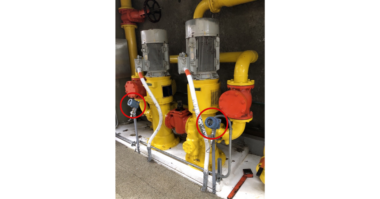When we think about what drives manufacturing growth in the United States, there are a few different factors that come to mind.
Tax policy. When you look at drivers of manufacturing growth from a policy perspective, one of the biggest challenges is current U.S. tax policy, which has not encouraged manufacturing companies to invest domestically. The U.S. corporate tax rate is higher than that of any of our major trading partners and all OECD countries. For example, corporate tax rates are 38% lower in China, 26% lower in Germany, and 11% lower in Japan. Why does this matter? According to a recent MAPI/Deloitte survey, manufacturers predict that by 2020 regulatory and tax concerns will play twice as important a role in the design of global operating footprints. Simply put, the tax code has never had a great impact on when, where, and how manufacturers invest.
Talent. There is clearly a “skills gap” in the manufacturing sector. Manufacturers are having a hard time attracting the right kind of talent they need. The issue here is that manufacturing has an image problem. Young people tend to think it’s old, dirty and messy; but those working in manufacturing know that this sector has actually become very high-tech, extremely progressive, and in many ways, intriguing and sexy. Yes, I said sexy. For example, if you ever loved lasers as a kid, imagine using them to scan and create a 3D model of a pump component. There is a myriad of technologies that are erupting in the pump industry, such as computational fluid dynamics and additive manufacturing (3D printing), that need to be showcased to steer young engineers into the pump industry, and other industries leading the way in new and exciting technologies.
Technology. Technology presents a massive opportunity to drive manufacturing growth and productivity. Growth and productivity are ultimately intertwined; as companies become more productive, they become more profitable, are then able to hire more people, make products more quickly or provide services faster, and continue to drive growth and productivity. Consider automation as one example. Automation, such as using robots in a manufacturing plant or having computers perform highly specialized tasks, presents incredible opportunities for manufacturing growth and productivity – yet, companies are still underinvesting in it.
Changing the way we do business. Automation is incredibly powerful, but it’s a big ticket item, and many manufacturers are reluctant to change the way they do business. It’s no secret that businesses have been sitting on trillions of dollars of cash, some of it for tax reasons, but also because of a secular caution that’s taken root in the wake of the Great Recession. However, sensible risk taking is one of the things that has made our manufacturing sector great, and we see examples every day of companies pushing the definition of what is possible. From companies using 3-D printing to accelerate innovation to embedded sensors that can monitor the health of equipment from halfway around the world, manufacturers are changing the way that they do business every day. And it’s this innovative spirit that is the ultimate driver of growth.




Comments